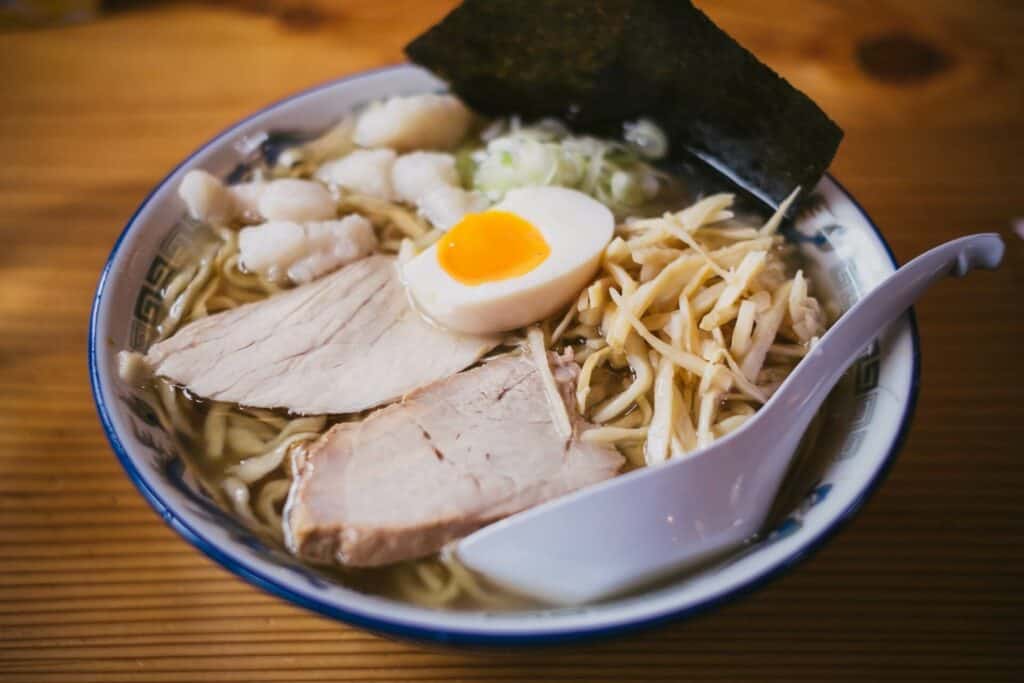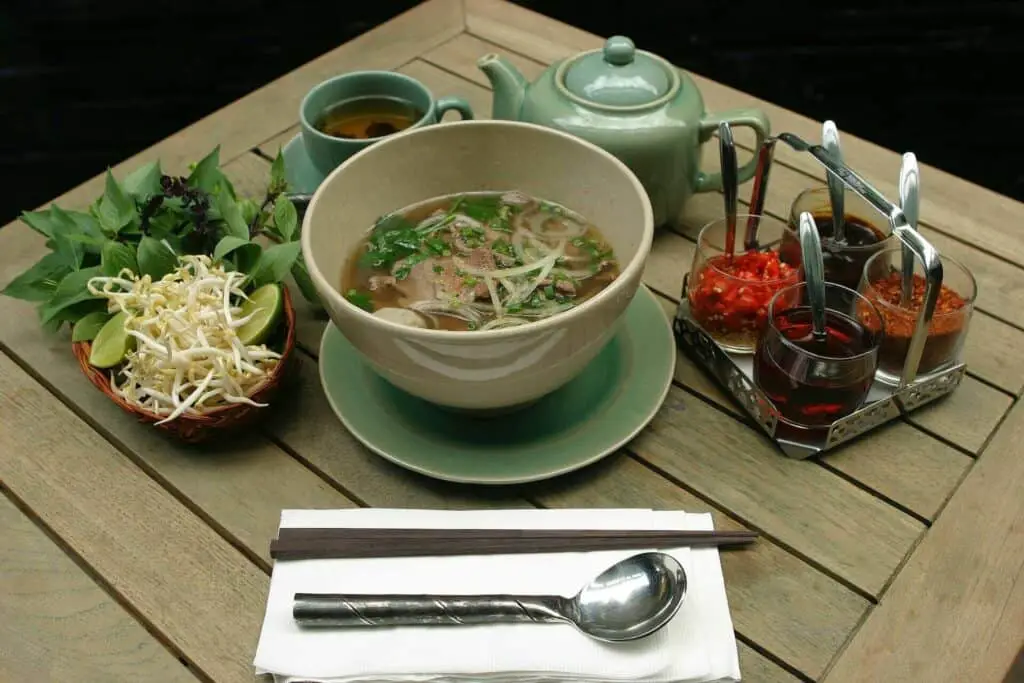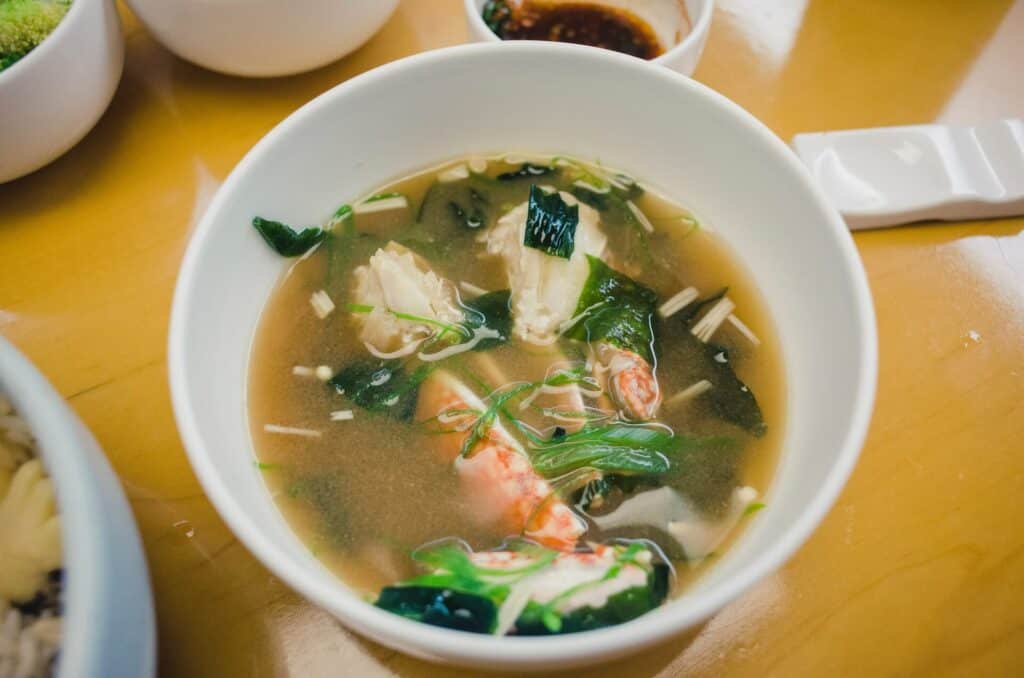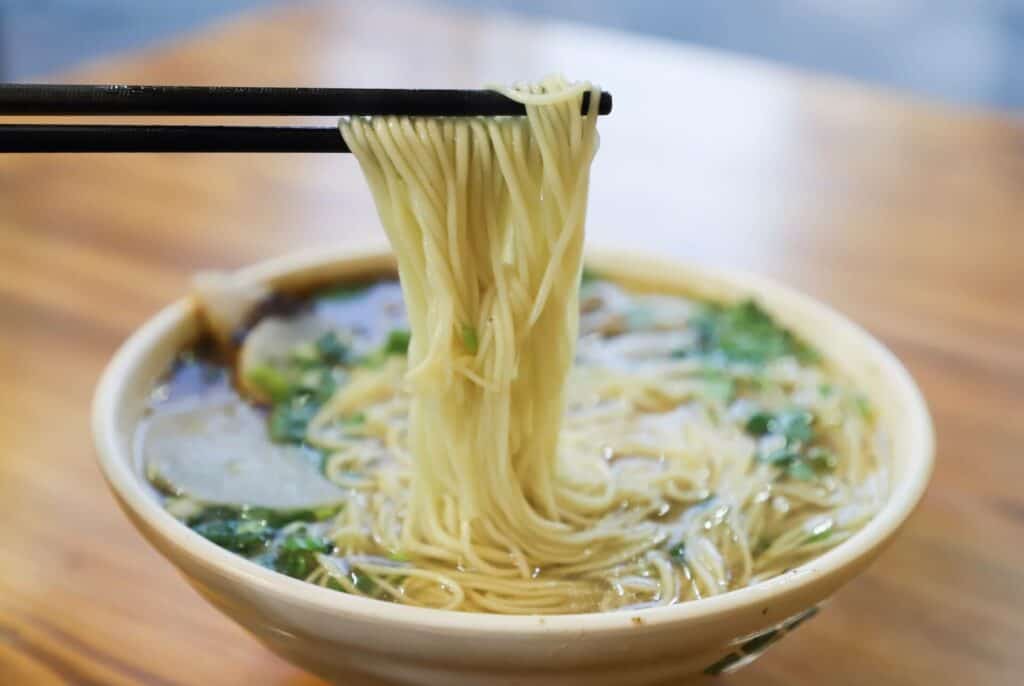Does ramen have miso? What are those ingredients, anyway? Japanese dishes can raise many interesting questions, and we can help answer them. Learn here about Japan’s national food and how to make your own version at home. It’ll be easy when you learn!
Ramen can have miso, but not always. The times when it would are when a person orders or makes a variation of this dish – miso ramen. These two things are separate ingredients, both have their version of noodles, and both are considered soups – but you shouldn’t mix one for another.


Does Ramen Have Miso?
It technically does, but only when it’s made as miso ramen. Sounds complicated, right? When you get to know this food from Japan, you’ll realize it’s not – miso ramen is just another variation of this dish.
It consists of wheat noodles, a broth made from miso paste, chicken or pork stock, and vegetables. The dish is usually topped with sliced roast pork, fermented bamboo shoots, green onions, and dried seaweed.
This hearty and filling dish is perfect for a cold winter day. The rich broth is full of flavor, and the noodle is filling and satisfying. Even Naruto eats this dish, so it’s a staple in more ways than one.
It defines Japanese cuisine and carries a lot of historical and cultural significance.

What Is Ramen?
It’s a Japanese noodle soup dish that typically consists of wheat noodles, broth, and toppings. There are many different types, but the most common is miso ramen, which contains a soup made from fermented soybeans. Other popular varieties include shoyu (soy sauce)and tonkotsu (pork bone).
This Japanese Dish Is Hailed for Its Great Nutrition
You can eat this dish whenever you want, but it’s best for lunch or dinner; the soup is healthy and nutritious and provides an excellent base for digestion. Hard and solid food is tough on the stomach, but broth and soft cooked ingredients are perfect; that’s why eating this food for dinner is also OK.
Essentially, all the toppings that go into the dish can be of your choice, so if you’re allergic to something, you can avoid adding it and simply replace it with something more beneficial. Overall, the home-cooked feel of the dish makes it a soup or a hearty replacement for one.

What Is Miso?
This famous Japanese seasoning is made from fermented soybeans, barley, or rice. It is salty and slightly sweet and has a robust and earthy flavor. It’s often used as a condiment or ingredient in many national dishes and recipes.
This paste is made by fermenting soybeans with salt and koji, a type of fungus, and there are white, red, and yellow varieties with different flavor profiles. The fermentation process can take a few weeks to a few years, depending on the desired flavor; the longer it is fermented, the stronger the flavor will be.
Miso Paste Is Used to Make Broth for Ramen
This versatile ingredient can be used in many different recipes and dishes – as a soup base, added to stews or sauces, or used as a marinade for meats and vegetables. It can also be used as a spread on sandwiches or wraps or stirred into rice or noodle dishes.
It can also be used in various ramens. To use this paste for that purpose, dissolve a teaspoon of it in a cup of hot water and add it to the soup before it boils.

Ramen vs Miso Noodles
The word is derived from the Chinese word for hand-pulled noodles, which were introduced to Japan in the early 20th century and have since become a staple food in Japanese culture.
They’re made from wheat flour, salt, and water, have a chewy texture, and are typically served in a bowl of soup with various toppings.
But did you know that miso noodles are also a thing? They’re a type of noodle made from the paste of the same name; they have a slightly sour and salty flavor and are often served in a bowl of soups or stews.
They’re a healthy option because they’re made from whole wheat flour, are low in calories, and are a good source of protein and fiber. These noodle packs can be found in most Asian markets and any store with Asian ingredients.

The Most Common Toppings for This Dish
While there are various regional recipes, the dish is typically served in a bowl with toppings like green onions, boiled eggs, bamboo shoots, and seaweed. It can also be cooked with various types of meat like chicken, beef, or pork.
For example, pork is sometimes added to make tonkotsu ramen, which has a pork broth as a base. Other very common toppings for this dish come from Chinese cuisine, such as fried eggs, bok choy, and rice.
Add Your Own Ingredients and Toppings to the Recipe
You can make your noodles spicy if you want, or make them less spicy if they’re too hot for your taste. In fact, you can make them with whatever you like. The toppings don’t have to be limited by a specific recipe or rule – as long as you have the noodle pack and the broth, everything else is up to you.

Recipe on How to Make This Dish at Home
This dish is famous worldwide and is relatively easy to prepare at home. While many instant options are available, homemade ramens are a great way to get the authentic flavor and experience. Plus, you can have it be as spicy as you like.
Here’s a quick and simple recipe.
You’ll need the following:
- Ramen noodle pack,
- Miso paste (can be store-bought),
- Soy sauce,
- Mirin,
- Bonito flakes,
- Fresh scallions,
- Soft-boiled eggs,
Instructions:
- Cook the noodle pack according to package instructions,
- In a small bowl, whisk together the paste, soy sauce, and mirin,
- Once the noodles are cooked, divide them into two bowls if cooking for two,
- Ladle the broth over the noodles and top with bonito flakes, fresh scallions, and soft-boiled eggs,
- Add other ingredients if you like – I recommend green onions, sesame seeds, and chicken.
Find Video Recipes and Cookbooks for the Best Japanese Flavor
If you are new to miso, start with a milder variety and add it slowly to recipes to find the flavor that you like best. It’s an acquired taste for some, but once you get used to it, you will find that it adds a unique depth of flavor to many dishes.
Whatever kind of recipe or instruction you find, I’m sure you’ll love the distinct Japanese flavors!